Conus floccatus Sowerby, 1839
Floccatus cone,
64mm
Conus
floccatus is one of the more variable cone shells. Its background color
range from near white to yellow to lavender and the dark markings on the shells
vary in shape and arrangement. This is a nocturnally active fish-eating cone
that lives mostly on the seaward slope and in surge channels, but can also be
found on large midlagoon pinnacles and even on some interisland patch reefs.
It is rarely seen alive, but empty shells are common. Many of the empty shells
seen are old, and by the condition of the shells, look as though they may have
died at roughly the same time. Possibly a disease ran through the population
some years ago, killing most of them.
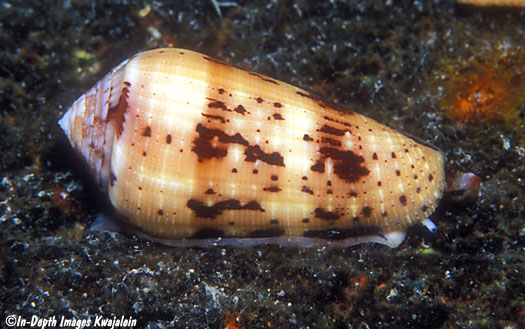
Egg cases, each containing numerous eggs, are affixed to the undersurfaces
of rocks until the eggs hatch. Most species of cones hatch into planktonic larvae
that drift with the currents for some length of time before settling down to
the reef to begin a benthic existence.
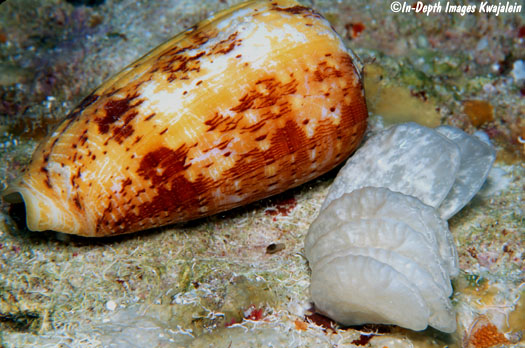
The yellow brown periostracum on the specimen below probably covers a mostly
white to slightly yelowish shell with brown markings.
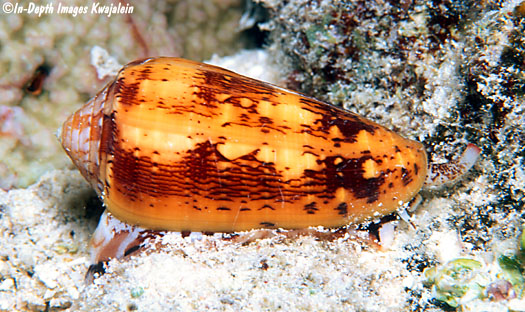
The next two shots show a distinctly
yellow specimen.
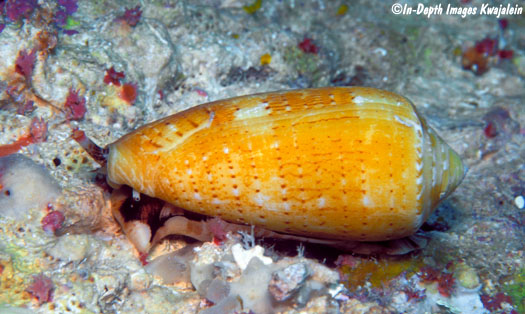
Looking into the anterior end,
we can see the red-tipped tubular siphon used to draw water into the shell to
flow across the gills. Below that is the round and slightly puckered mouth,
from which the tentacle bearing the venomous harpoon extends. After the cone
stings a prey, it will expand its mouth around to engulf it. On both sides of
the mouth, we can see a sensory tentacle with an eye near the tip.
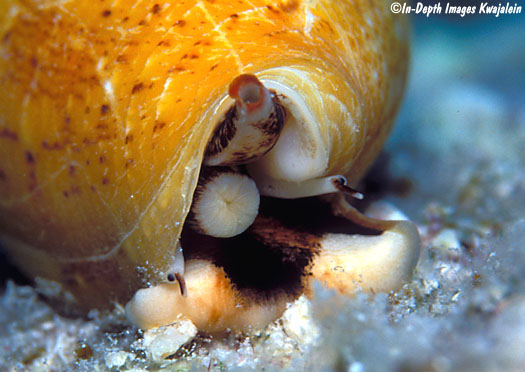
Below are two young specimens,
one distinctly yellow and the other lavender.
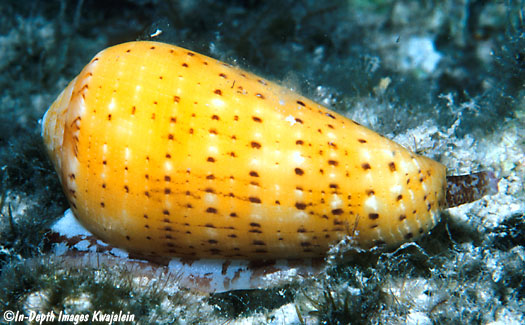
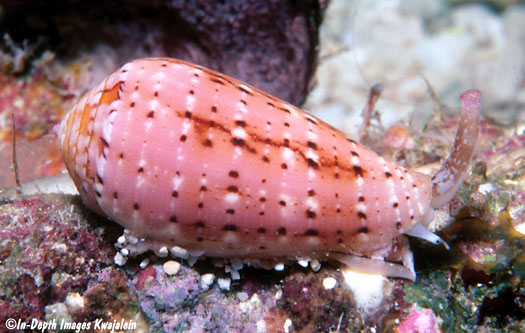
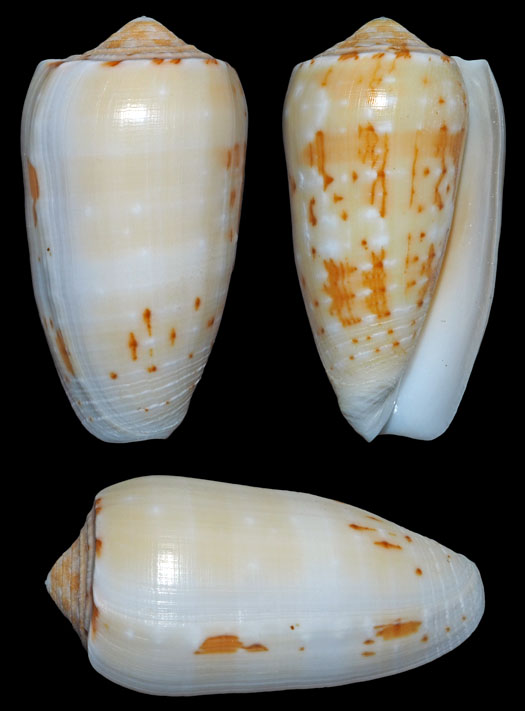
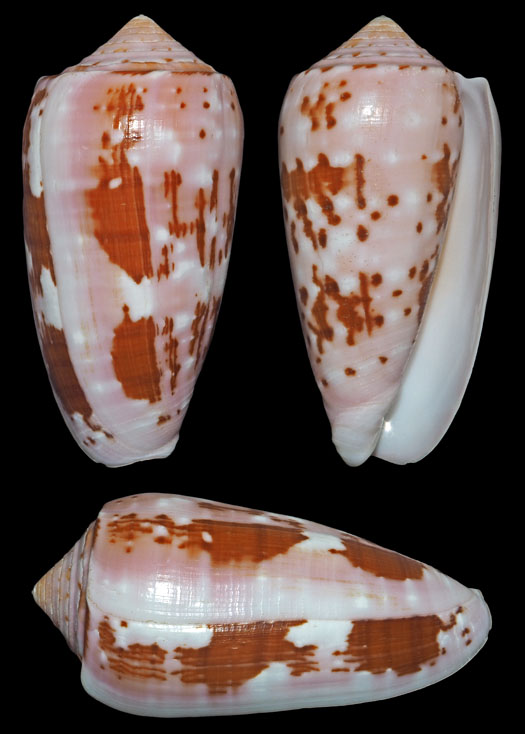
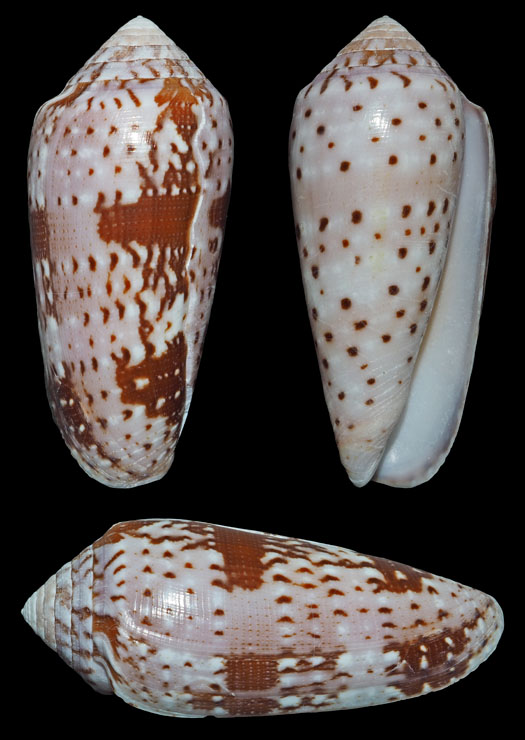
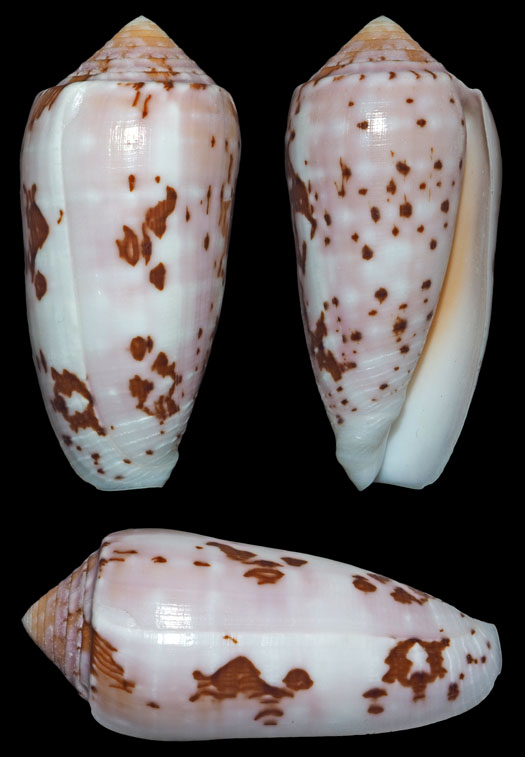
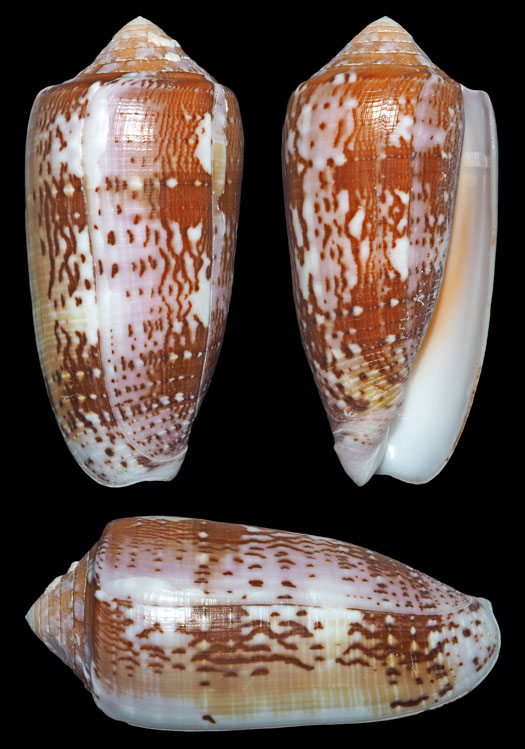
Created 4 July 2009
Updated 12 March 2020
Return to cones
Kwajalein Underwater home












